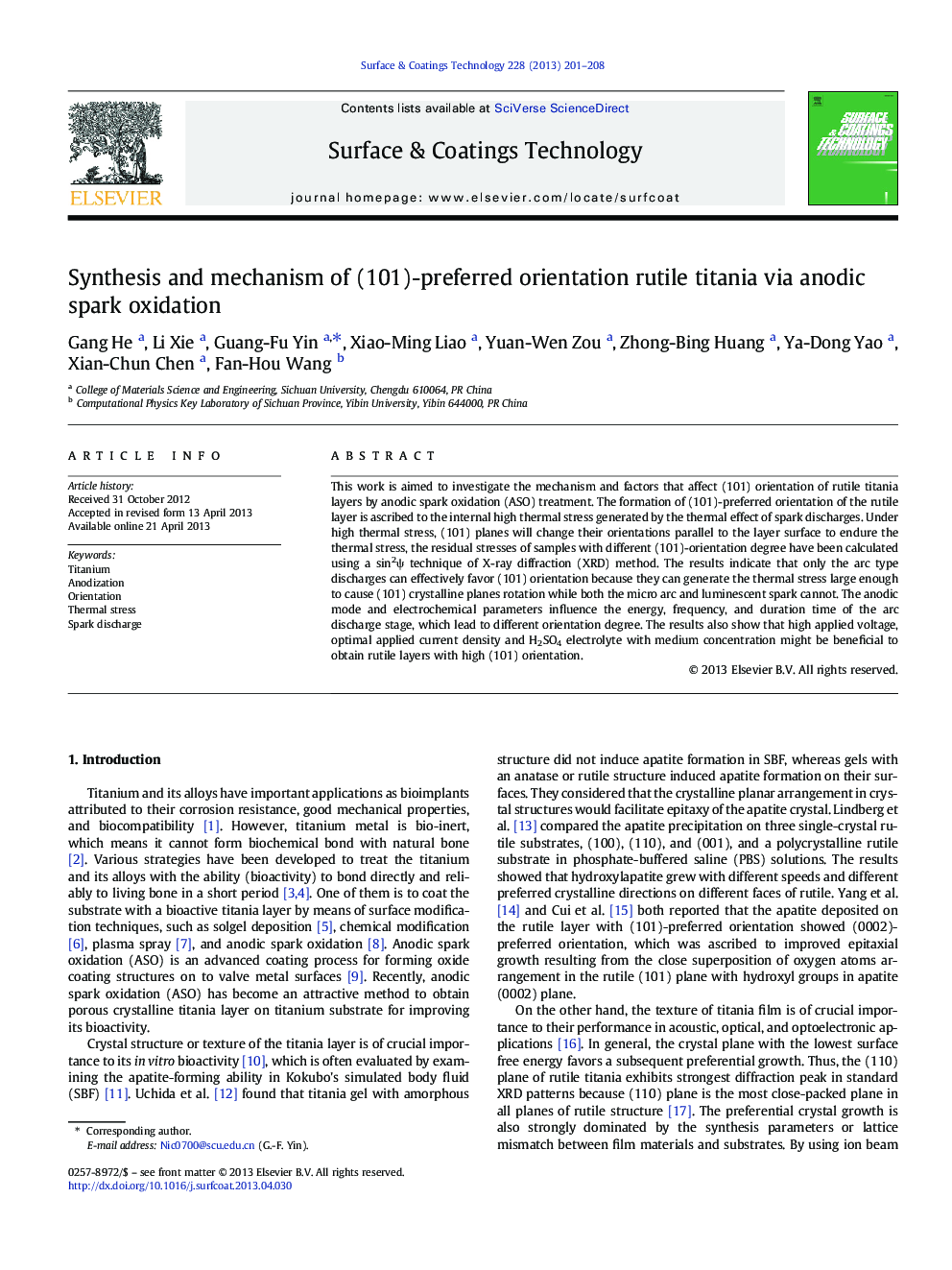| Article ID | Journal | Published Year | Pages | File Type |
|---|---|---|---|---|
| 8029924 | Surface and Coatings Technology | 2013 | 8 Pages |
Abstract
This work is aimed to investigate the mechanism and factors that affect (101) orientation of rutile titania layers by anodic spark oxidation (ASO) treatment. The formation of (101)-preferred orientation of the rutile layer is ascribed to the internal high thermal stress generated by the thermal effect of spark discharges. Under high thermal stress, (101) planes will change their orientations parallel to the layer surface to endure the thermal stress, the residual stresses of samples with different (101)-orientation degree have been calculated using a sin2Ï technique of X-ray diffraction (XRD) method. The results indicate that only the arc type discharges can effectively favor (101) orientation because they can generate the thermal stress large enough to cause (101) crystalline planes rotation while both the micro arc and luminescent spark cannot. The anodic mode and electrochemical parameters influence the energy, frequency, and duration time of the arc discharge stage, which lead to different orientation degree. The results also show that high applied voltage, optimal applied current density and H2SO4 electrolyte with medium concentration might be beneficial to obtain rutile layers with high (101) orientation.
Related Topics
Physical Sciences and Engineering
Materials Science
Nanotechnology
Authors
Gang He, Li Xie, Guang-Fu Yin, Xiao-Ming Liao, Yuan-Wen Zou, Zhong-Bing Huang, Ya-Dong Yao, Xian-Chun Chen, Fan-Hou Wang,
